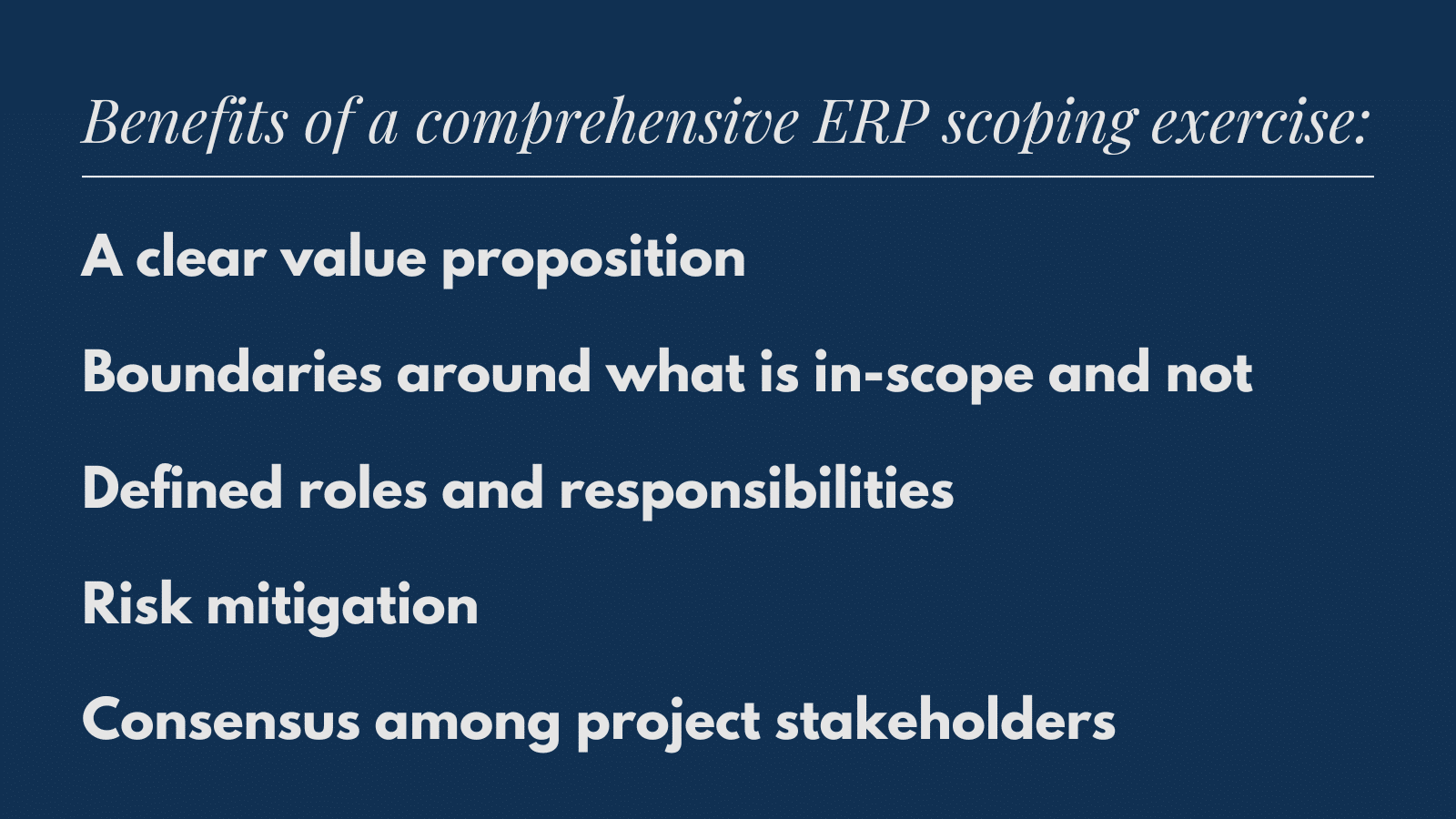
The importance of scoping an ERP project
Don't skimp on scope: Five benefits of ERP project scoping
By Jason Wolf, Senior Director, Solutions & Strategy
Having spent nearly two decades implementing enterprise resource planning software for organizations, I’ve seen firsthand the transformative power of a well-executed ERP project. However, the journey to successful implementation starts long before the software is installed, or the first datasets are migrated. It begins with a thorough and detailed project scoping process. Scoping an ERP project is crucial and sets the stage for a successful deployment by surfacing the value proposition, setting clear boundaries, defining roles and responsibilities, identifying risks, securing buy-in from key stakeholders, and more.
Surfacing the value proposition
The primary step in scoping an ERP implementation is to clearly define the objectives and expected outcomes for the project. What does the organization hope to achieve by deploying a modern ERP system? Whether it’s improving operational efficiency, enhancing data visibility, or supporting business growth, understanding the value proposition ensures the project aligns with the strategic goals of the organization. It ensures everyone understands the purpose and benefits of the project, aids in decision-making by prioritizing functionality that delivers the most value, and justifies the investment.

Setting boundaries: In-scope vs. out-of-scope
One of the critical tasks in the scoping phase is to delineate between what is included in the project and what is not. This involves identifying the specific business processes and technical tasks required to operate the business once the ERP system is live. It’s important to prioritize the critical tasks and define an achievable scope that allows the organization to realize value efficiently. Setting clear exclusions during this phase prevents scope creep from occurring during the implementation while ensuring the project team remains focused on delivering the agreed-upon functionality.
Defining roles and responsibilities
A successful ERP implementation requires a well-coordinated effort among various stakeholders across the organization. During the scoping phase, it is necessary to define the roles and responsibilities of each team member, from project sponsors and managers to core team members and IT staff. By doing so, it ensures everyone knows their responsibilities and can be held accountable during the project. Furthermore, it facilitates better communication and coordination between team members as well as streamlines decision-making, reducing delays and conflicts.
Identifying key risks
No project is without risks. Identifying potential risks during the scoping phase allows for defining mitigation strategies before the project begins. Risks can range from technical challenges or limitations and data migration issues to user resistance to change. By uncovering key risks during scoping, the team is prepared for the potential challenges, reducing the likelihood of project interference and delays.
Securing commitment from key stakeholders
Before progressing to project implementation, it’s critical to review the project scope with key stakeholders and obtain their approval. This formal approval process ensures there is a consensus on the project’s objectives, scope, and plan. The commitment from key stakeholders is necessary for confirming their support throughout the project while establishing a clear agreement that can serve as a reference during the project if issues arise.
Conclusion
While this list is not comprehensive, I hope it demonstrates how critical it is to start your ERP deployment journey with an effective project scoping phase. Invest the necessary time— the insights and clarity gained during this phase will pay dividends throughout the project lifecycle, ensuring your ERP implementation is a resounding success.
Ensure a successful ERP implementation
Schedule a call with one of our solution experts today.


